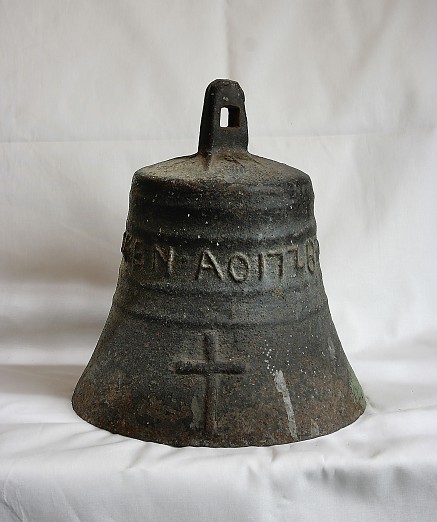Death Bell
The last hour has struck...
Death Bell
1728
Iron; 33 cm
In earlier centuries, the sound of church bells was an important acoustic component of everyday culture to a much greater extent than it is today. The ringing of bells not only signaled the time of day and the clock, but also announced holidays and was closely linked to events in family life. This has not changed to this day, but the church bell must now be understood in many cases rather as a relic of an "old" everyday culture, within which churchly, equally biographical events were subject to a much more stringent ritual sequence. This also applies to the ringing of the bell on the occasion of the death of a person, whereby such a bell was once called a death bell. Friedrich Schiller also speaks of such a bell in his famous poem "Das Lied von der Glocke" from 1799.
Thanks to a private donation, a bell – the only one so far – has recently been added to the collection of the Museum for Sepulchral Culture. Although it has been in the family for many decades, unfortunately nothing is known about its original origin. The fact that the bell, which weighs around 30 kg, could be specifically a funeral bell is suggested by the stylized cross in the casting as the religious symbol for the Christian hope of resurrection. Special features are also the year and name inscription " AO 1728" / "Johannes Strakken". It is very likely that the name refers to the donor who gave this bell to a particular church in 1728.

© Museum für Sepulkralkultur, Kassel, Bildarchiv
The sounding of the death bell could refer to different periods of time. For example, it announced the death of a person, sounded for three days between the hour of death and the funeral, which was called a three-day ringing, and finally sounded at the funeral mass. In most cases, the sounding was linked to very specific rules, which could depend on the marital status, gender or age of the deceased person. Thus, a smaller bell – if available – was rung for deceased women and girls than for deceased men and boys. This alone gives an idea that the ringing of the bell in earlier times was more than just an acoustic signal in a church-religious context – it was an acoustic medium through which equally diverse information could be transported and deciphered in a social context.
Dr. Ulrike Neurath
Arbeitsgemeinschaft Friedhof und Denkmal e.V.
Zentralinstitut für Sepulkralkultur
Museum für Sepulkralkultur
Weinbergstraße 25–27
D-34117 Kassel | Germany
Tel. +49 (0)561 918 93-0
info@sepulkralmuseum.de








